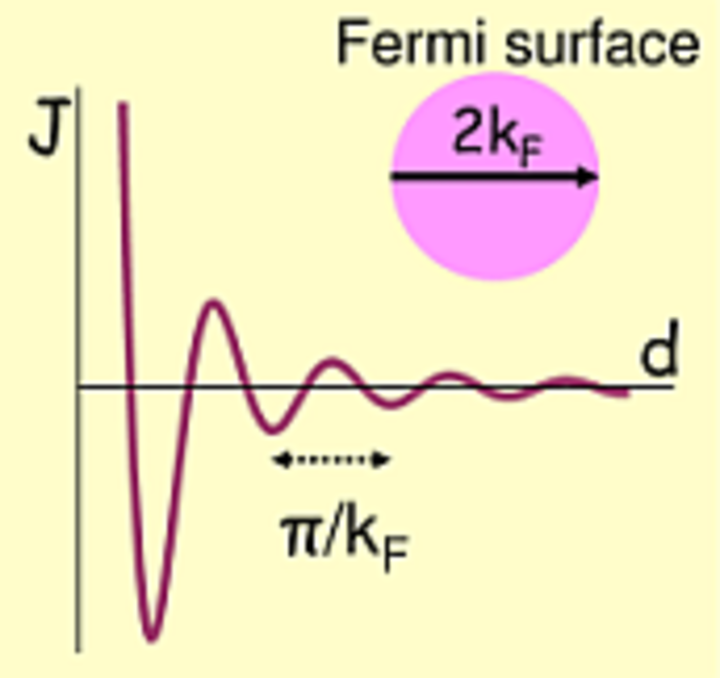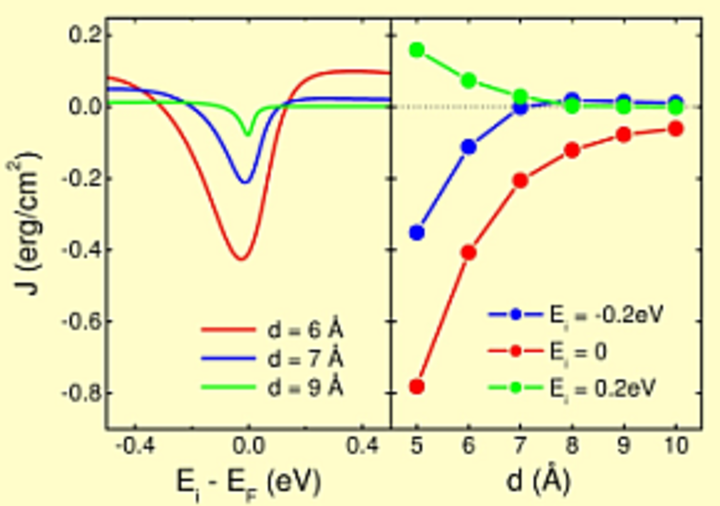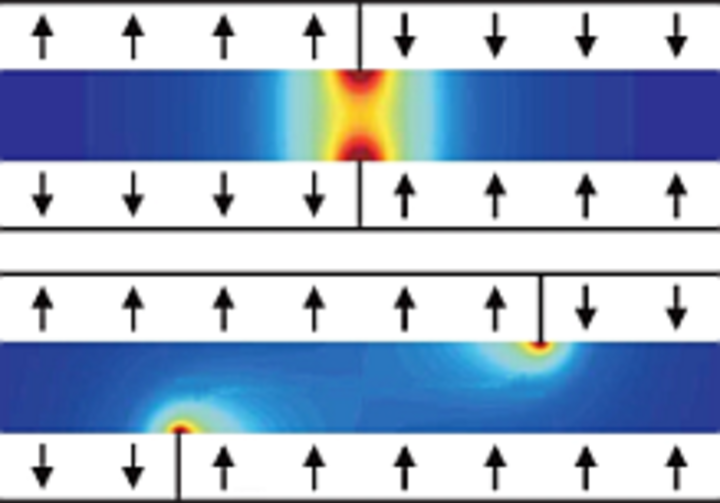Interlayer coupling in magnetic thin-film layered structures play an important role in controlling their magnetic properties. The coupling may originate from exchange and from magnetostatic interactions affecting magnetizations of ferromagnetic films across a non-magnetic spacer layer. For a metallic spacer the interlayer exchange coupling (IEC) oscillates as a function of its thickness.
For an insulating spacer the IEC decays exponentially reflecting the evanescent nature of the exchange-mediated states. A sizable antiferromagnetic IEC was found experimentally in Fe/MgO/Fe junctions when MgO thickness is about or less than one nanometer. We have performed model and first-principles calculations to elucidate the nature of this IEC. Our results suggest that localized impurity (defect) states within the band gap of the insulator strongly affect the magnitude and sign of this coupling. We demonstrate that the impurity-assisted IEC becomes antiferromagnetic if the energy of the impurity states matches the Fermi energy. More recently we have demonstrated that the IEC may occur across an ultrathin ferroelectric barrier layer that allows controlling the magnitude of the coupling by ferroelectric polarization.
We have been collaborating with our experimental colleagues to explain the nature of the oscillatory IEC between ferromagnetic [Pt/Co] films through an insulating NiO layer. A simple model which includes the exchange interaction at the interfaces and in the bulk of the antiferromagnetic NiO explains quantitatively the observed oscillatory behavior. It was also found experimentally that these structures exhibit an interesting overlap of magnetic domains in the two ferromagnetic films which depends on NiO film thickness. Our modeling explains this behavior in terms of the magnetostatic coupling occurring due to the presence of domain walls.
References
- M. Ye. Zhuravlev, A. V. Vedyayev, and E. Y. Tsymbal, "Interlayer exchange coupling across a ferroelectric barrier," J. Phys.: Condens. Matt. 22, 352203 (2010).
- K. Janicka, J. D. Burton, and E. Y. Tsymbal, "Effects of magnetostatic coupling on stripe domain structures in magnetic multilayers with perpendicular anisotropy," J. Appl. Phys. 101, 113921 (2007).
- A. Baruth, L. Yuan, J. D. Burton, K. Janicka, E. Y. Tsymbal, S. H. Liou, and S. Adenwalla, "Domain overlap in antiferromagnetically-coupled [Co/Pt]/NiO/[Co/Pt] multilayers," Appl. Phys. Lett. 89, 202505 (2006).
- A. Baruth, D. J. Keavney, J. D. Burton, K. Janicka, E. Y. Tsymbal, L. Yuan, S. H. Liou, and S. Adenwalla, "Origin of the interlayer exchange coupling in [Co/Pt]/NiO/[Co/Pt] multilayers studied with XAS, XMCD, and micromagnetic modeling," Phys. Rev. B 74, 054419 (2006).
- T. Katayama, S. Yuasa, J. P. Velev, M. Ye. Zhuravlev, S. S. Jaswal, and E. Y. Tsymbal, "Interlayer exchange coupling in Fe/MgO/Fe magnetic tunnel junctions," Appl. Phys. Lett. 89, 112503 (2006).
- M. Y. Zhuravlev, E. Y. Tsymbal, and A. V. Vedyayev, "Impurity-assisted interlayer exchange coupling across a tunnel barrier," Phys. Rev. Lett. 94, 026806 (2005).

Oscillatory variation of interlayer exchange coupling as a function of metallic spacer thickness.

Interlayer exchange coupling as a function of impurity energy and layer thickness.

Magnetic stray field depending on the domain overlap in antiferromagnetically coupled films.